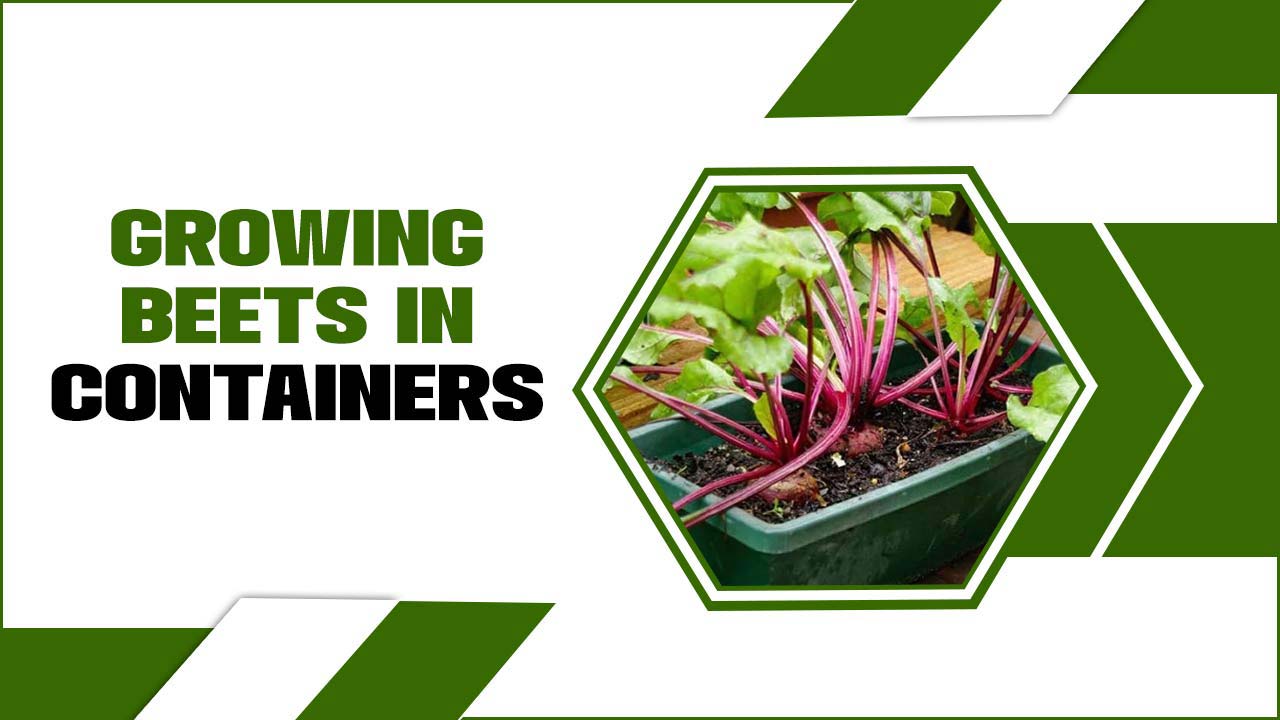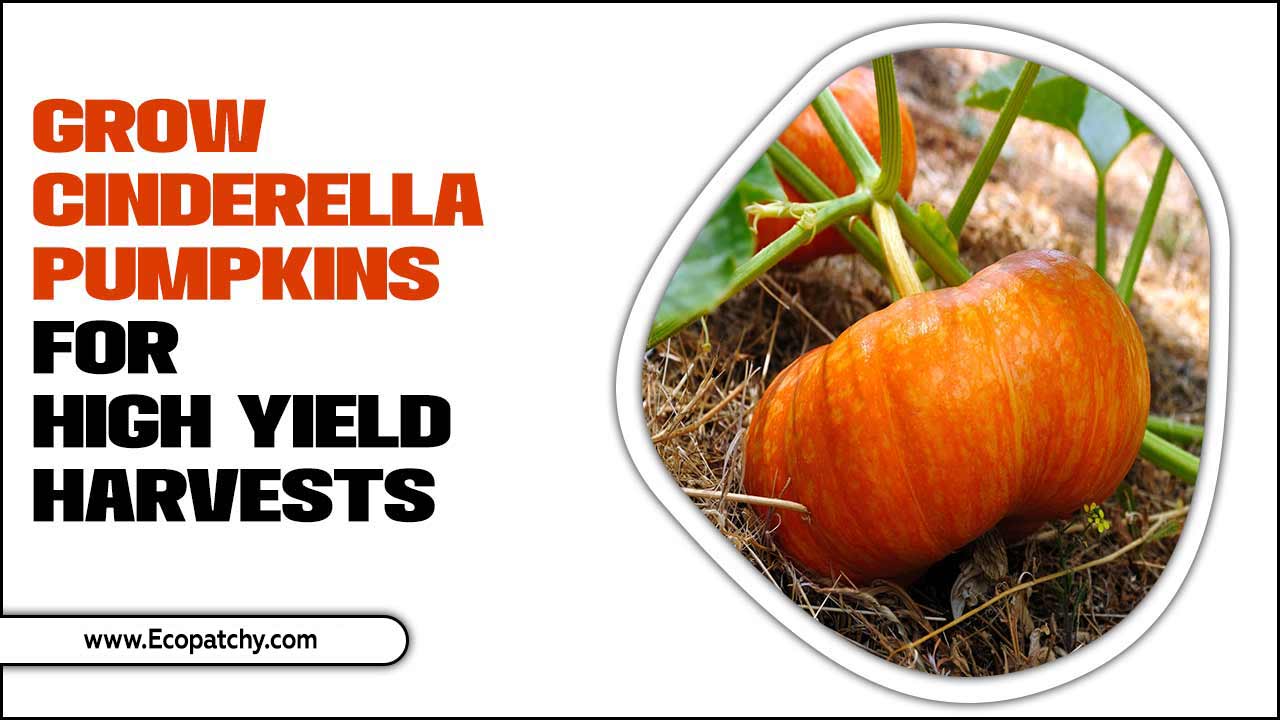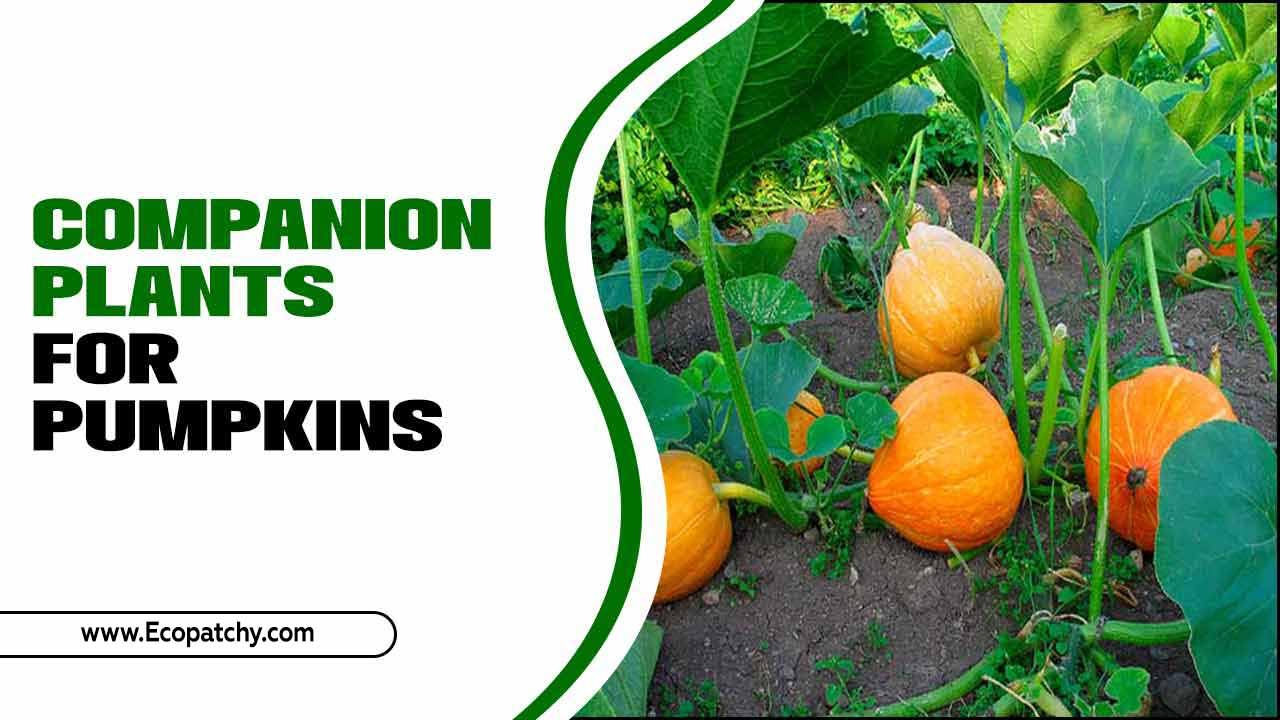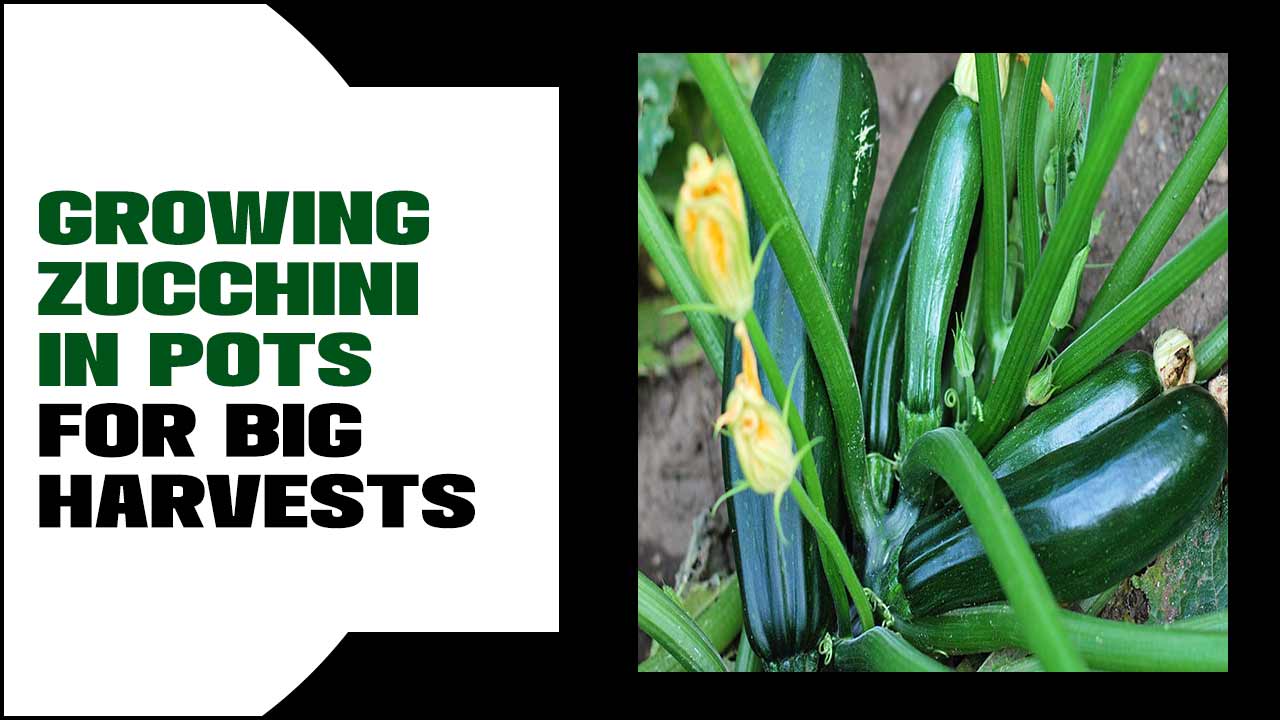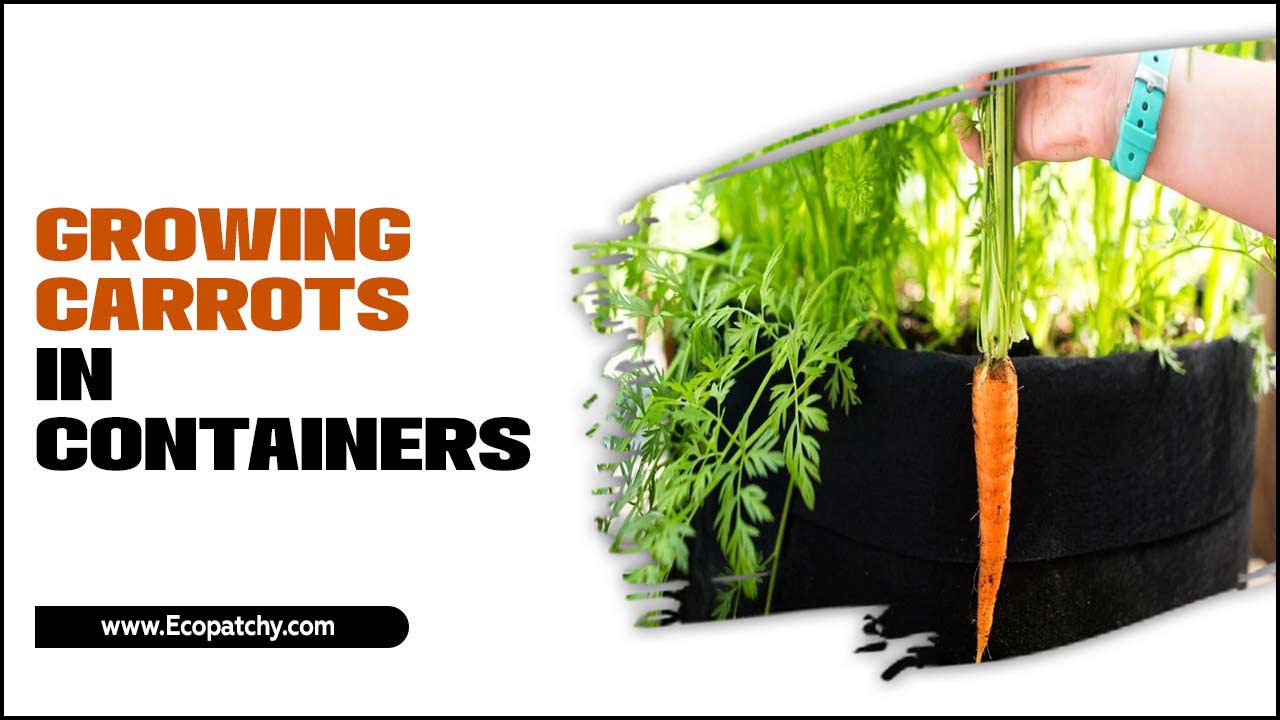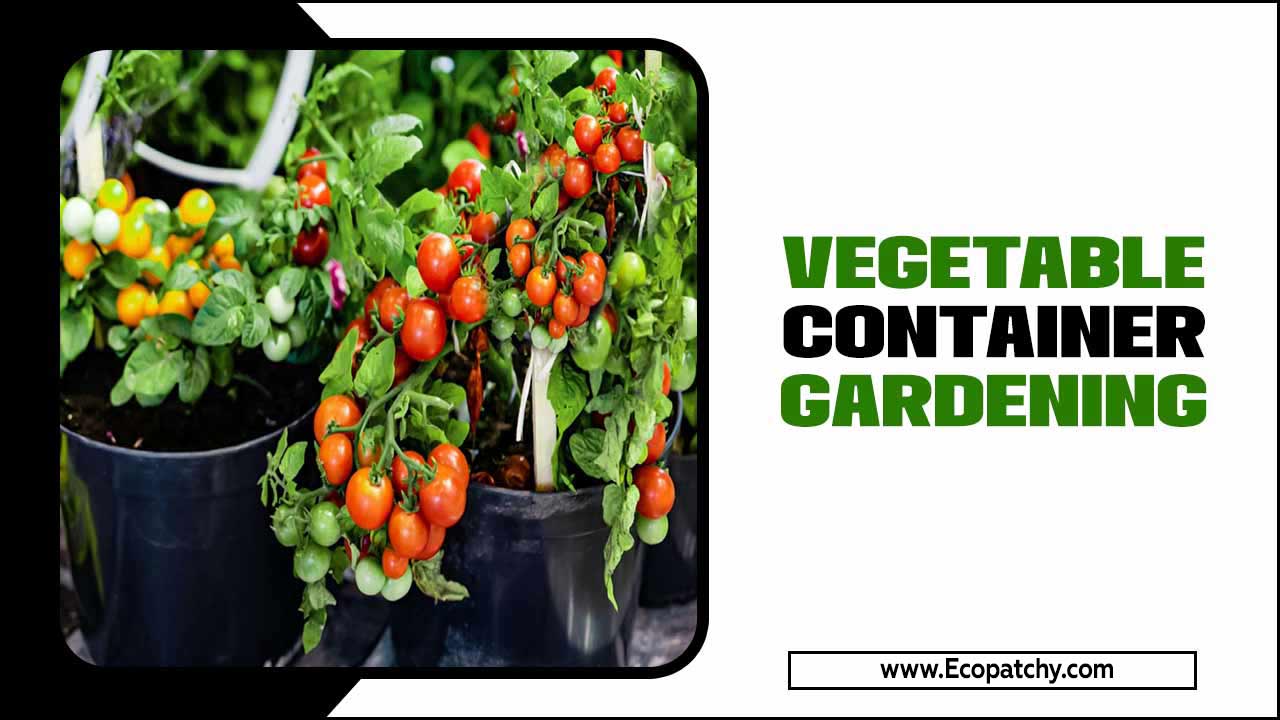Pumpkins are a staple of fall, often associated with traditional autumn activities such as pumpkin carving and pie making. However, you don’t need a large plot of land or a sprawling garden to grow this versatile vegetable.
With the right techniques and containers, pumpkins can be successfully grown in smaller spaces such as balconies, patios, or even indoors. Here, we will explore how to grow pumpkins in containers, from selecting the right container and soil to caring for your plants and harvesting your pumpkins.
Whether you are a seasoned gardener looking for a new challenge or a novice with limited space, this guide will provide you with all the information you need to cultivate pumpkins in containers successfully.
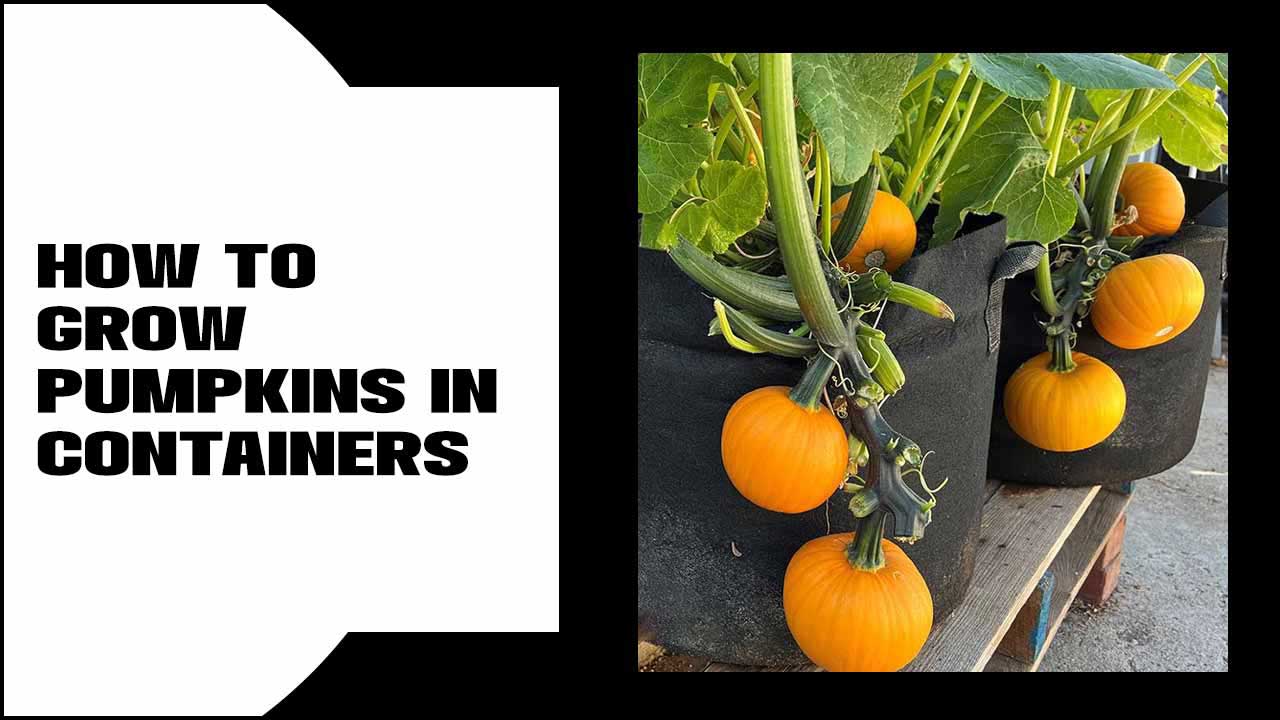
How To Grow Pumpkins In Containers – 6 [Step By Step] Guide
![How To Grow Pumpkins In Containers - 6 [Step By Step] Guide](https://ecopatchy.com/wp-content/uploads/2023/12/How-To-Grow-Pumpkins-In-Containers-6-Step-By-Step-Guide.webp)
Here to know the answer on how to grow pumpkins in containers. Growing pumpkins in containers can be a convenient and space-saving way to enjoy these vibrant and versatile vegetables. To begin, choose a container that is at least 18 inches in diameter and has drainage holes at the bottom to prevent waterlogging.
Fill the container with a well-draining potting mix mixed with compost or aged manure for added nutrients. Next, sow the pumpkin seeds about 1 inch deep and provide them with regular water and sunlight.
As the plants grow, make sure to provide support for the vines by using trellises or stakes. Regularly monitor the moisture levels in the container, ensuring that the soil remains consistently moist but not waterlogged. Here is some information on how to grow pumpkins in containers:
1.Select A Suitable Container

Choose a large container with a minimum depth of 18 inches and a width of at least 20 inches. Make sure it has drainage holes at the bottom. Fill the container with a well-draining potting mix, leaving about an inch of space from the top. The potting mix should be rich in organic matter and have a slightly acidic pH level. Before planting, soak the pumpkin seeds in water for a few hours to improve germination rates.
Once soaked, plant the seeds about an inch deep into the potting mix, spacing them about 2-3 inches apart. Water the container thoroughly after planting, ensuring that the soil is evenly moist but not waterlogged.
Place the container in a sunny spot, as pumpkins require at least 6-8 hours of direct sunlight daily for optimal growth. Regularly check the moisture level in the container and water when the top inch of soil feels dry
2.Choose The Right Pumpkin Variety
Look for compact or bush varieties of pumpkins that are suitable for container gardening. Some good options include ‘Baby Bear,’ ‘Jack Be Little,’ and ‘Sugar Pie.’These varieties are known for their smaller size and ability to thrive in limited space. When selecting a container, make sure it has drainage holes to prevent waterlogged soil.
A container that is at least 18 inches deep and wide is ideal for pumpkin plants. Fill the container with a well-draining potting mix that is rich in organic matter. Place the container in a location that receives full sun, as pumpkins require a minimum of six hours of direct sunlight each day.
Water the plants regularly, keeping the soil evenly moist but not soggy. Fertilize the plants every two weeks with a balanced, water-soluble fertilizer to promote healthy growth. As the pumpkins develop, you may need to provide support for the vines by using stakes
3.Prepare The Container
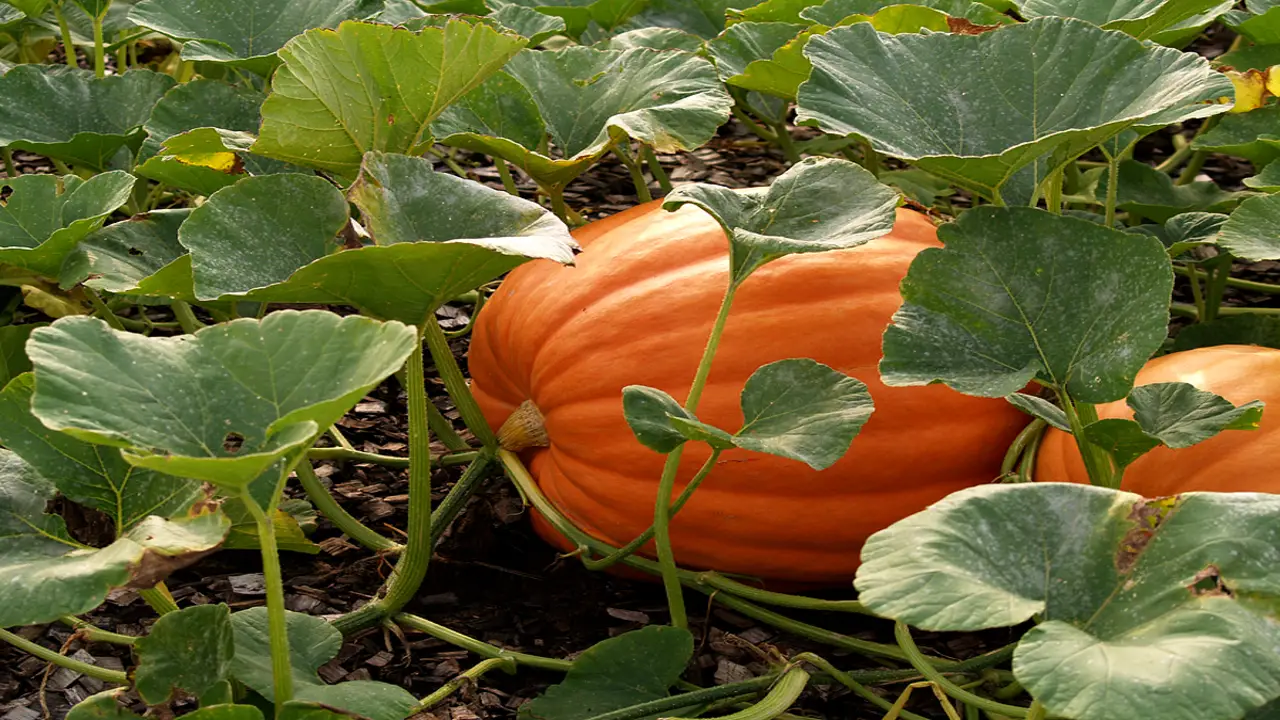
Fill the container with a well-draining potting mix enriched with compost or organic matter. Leave about 2 inches of space from the top to allow for watering. Choose a container that is at least 20 inches deep and wide, as pumpkins have deep root systems and need ample space to grow. Place the container in a location that receives full sun for at least six hours a day.
This will ensure that the pumpkin plants get enough sunlight to thrive. Water the soil thoroughly after planting the pumpkin seeds or seedlings, and ensure that the soil remains consistently moist throughout the growing season.
Regularly check the moisture level by sticking your finger into the soil – if it feels dry, it’s time to water. Additionally, consider using a slow-release organic fertilizer to provide essential nutrients to the plants. As the pumpkin plants grow, you may need to support the vines using stakes or trellises to prevent them from
4.Planting The Seeds
Plant 2-3 pumpkin seeds about 1 inch deep in the center of the container. Water the soil thoroughly after planting. Place the container in a location that receives at least six hours of direct sunlight each day. As the pumpkin plants start to grow, thin them out, leaving only the strongest seedling in the container.
Regularly water the plants, making sure the soil is consistently moist but not waterlogged. Fertilize the pumpkin plants with a balanced, slow-release fertilizer according to the package instructions. As the vines grow, provide support by placing a trellis or stakes in the container to prevent them from sprawling on the ground.
Monitor the plants for any signs of pests or diseases and take appropriate measures to control them. When the pumpkins start to develop, provide a layer of mulch around the base of the plants to help retain moisture and suppress weed growth
5.Provide Proper Sunlight
Place the container in a sunny location where the pumpkin plants receive at least 6-8 hours of direct sunlight daily. This is crucial for the growth and development of the pumpkin plants. Make sure to choose a container that is large enough to accommodate the pumpkin’s root system.
Fill the container with well-draining soil mixed with compost or organic matter to provide the plants with the necessary nutrients. It’s important to water the plants regularly, ensuring that the soil remains moist but not waterlogged. To promote healthy growth, consider using a balanced fertilizer every two weeks during the growing season.
Additionally, it’s important to support the vines as they grow by using stakes or trellises. This will prevent the pumpkins from rotting on the ground and protect them from pests. Finally, monitor the plants for any signs of disease or pest infestation, and take appropriate measures to
6.Watering And Fertil
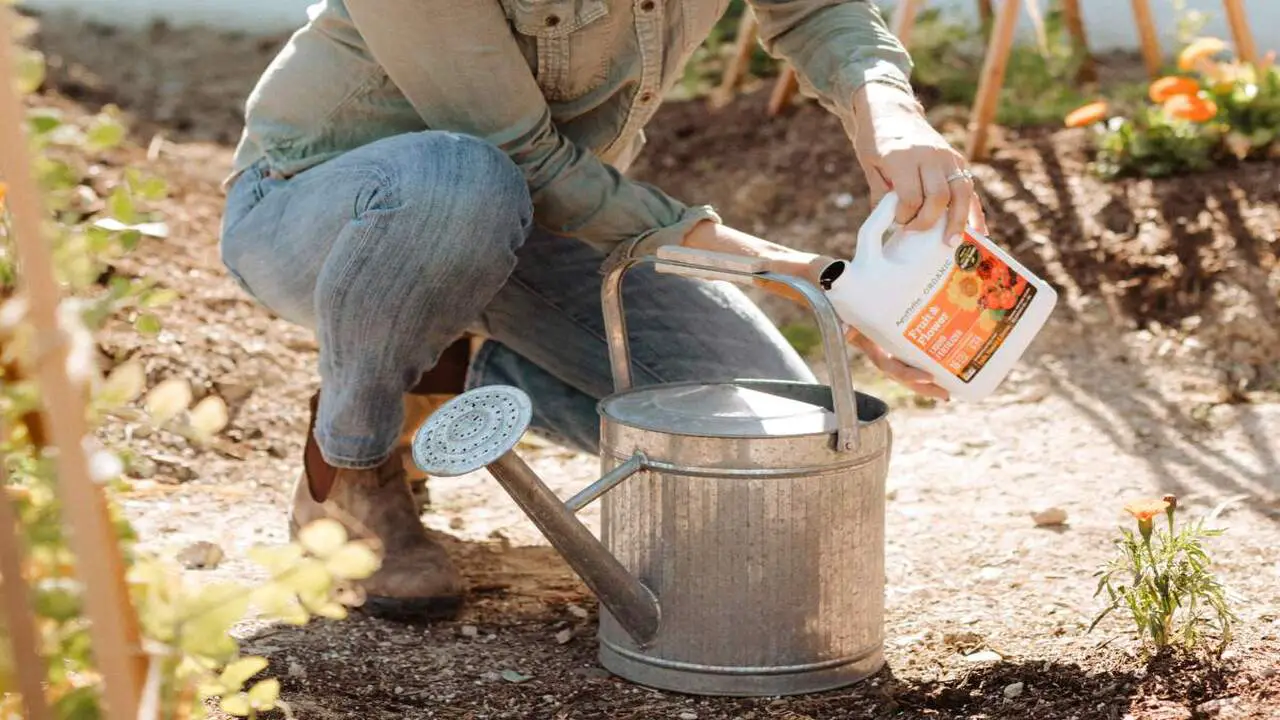
Watering and fertilizing are essential aspects of successfully growing pumpkins in containers. Pumpkins require consistent moisture to thrive, so it is important to water them regularly. However, it is crucial to strike a balance and not overwater, as this can lead to root rot. It is recommended to water the plants deeply, ensuring that the soil is evenly moist. Here’s some information on both:
- Watering: Pumpkins require consistent, deep watering to ensure proper growth and development. Container-grown pumpkins may need to be watered more frequently than those grown in the ground, as containers tend to dry out faster. It’s crucial to keep the soil consistently moist but not waterlogged. Water the plants thoroughly until the water drains out from the bottom of the container. Aim to water them at least once a week, adjusting the frequency based on weather conditions and soil moisture levels.
- Fertilizing: Pumpkins are heavy feeders and require regular fertilization to thrive. Start by incorporating well-rotted compost or aged manure into the container before planting. This will provide a good base of nutrients. As the plants grow, you can supplement with a balanced slow-release fertilizer or organic fertilizers specifically formulated for vegetables.
Dealing With Pests And Diseases In Container-Grown Pumpkins
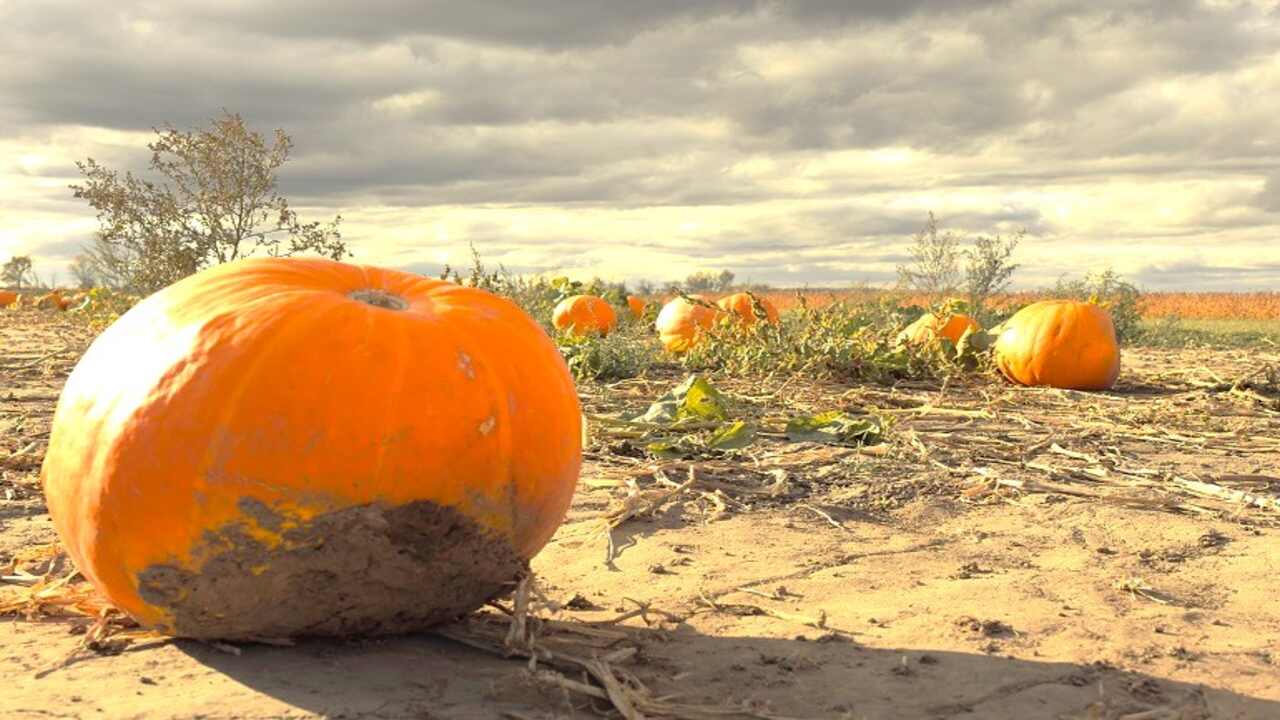
Dealing with pests and diseases in container-grown pumpkins can be crucial for maintaining a healthy and productive crop. One common pest that can attack pumpkins is the cucumber beetle. These small, striped beetles can cause significant damage by feeding on the leaves and transmitting bacterial wilt disease.
To prevent infestations, it is important to implement proper pest management techniques. One effective method is to cover the container with a fine mesh netting to keep the beetles out. Regularly monitoring the plants for Here are some tips and information to help you tackle common issues:
- Pests:
- Aphids: These small insects can suck the sap from pumpkin plants. Use insecticidal soap or neem oil to control them.
- Squash Bugs: These pests can cause significant damage. Handpick and destroy them or use insecticides labeled for squash bugs.
- Cucumber Beetles: These beetles feed on pumpkin foliage and transmit diseases. Apply organic insecticides or use row covers to prevent infestations.
- Diseases:
- Powdery Mildew: This fungal disease appears as a white, powdery coating on leaves. Use fungicides labeled for powdery mildew, or try organic alternatives like a mixture of baking soda and water.
- Downy Mildew: This disease causes yellow spots on leaves and can lead to plant death
Harvesting And Storing Pumpkins Grown In Containers
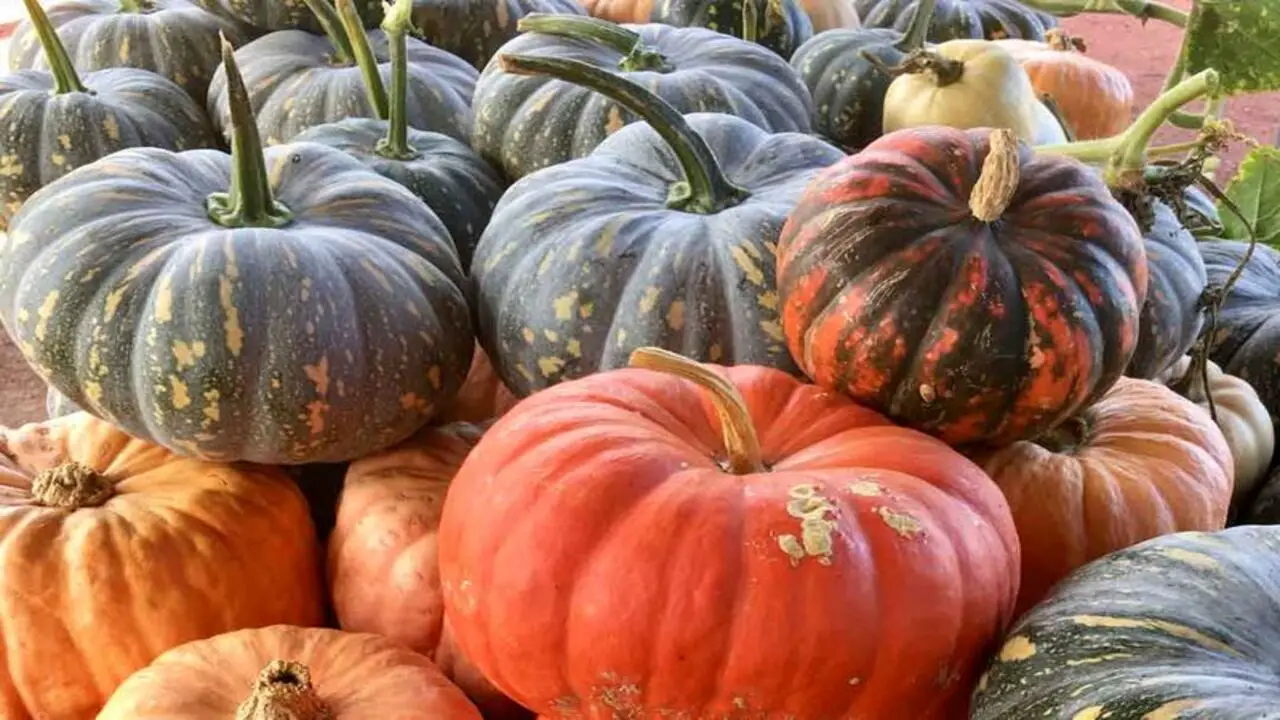
Harvesting and Storing Pumpkins Grown in Containers. Growing pumpkins in containers can be a rewarding experience. Here are some tips on harvesting and storing pumpkins that have been grown in containers:
Harvesting:
- Monitor the size and color of your pumpkins. Once they have reached their mature size and have developed a deep orange color, they are ready to be harvested.
- Use a sharp knife or pruning shears to cut the stem of the pumpkin, leaving about 2-3 inches attached to the fruit. This will help prevent rotting.
- Handle the pumpkins with care to avoid any damage. Bruised or injured pumpkins may not store well.
Storing:
- Clean the pumpkins by gently wiping off any dirt or debris. Do not wash them with water as it can promote rotting.
- Allow the pumpkins to cure for about two weeks in a warm, dry place with good air circulation.
Troubleshooting Common Issues In Container Gardening
To troubleshoot common issues in container gardening, particularly when growing pumpkins in containers, there are a few key factors to consider. Pumpkins are heavy feeders, so it is crucial to provide them with a balanced fertilizer every two weeks during the growing season. By following here are some helpful tips:
- Container Size: Ensure that the containers you choose are large enough to accommodate the growth of pumpkin plants. Pumpkins require a lot of space for their roots to spread out and grow.
- Soil Quality: Use well-draining soil that is rich in organic matter. This will help prevent waterlogged conditions that can lead to root rot. Additionally, consider adding compost or aged manure to improve soil fertility.
- Watering: Maintain consistent moisture levels in the soil. Avoid overwatering, as this can cause root rot, but also ensure that the plants receive enough water, especially during hot and dry periods. Mulching around the base of the plants can help retain moisture.
- Fertilization: Regularly feed your pumpkin plants with a balanced fertilizer to provide them with essential nutrients. Follow the instructions on the fertilizer packaging for the appropriate application rates.
Tips And Tricks For Successful Container Pumpkin Gardening

Container gardening has become an increasingly popular way to grow plants, and pumpkins are no exception. Successful container pumpkin gardening requires careful planning and attention to detail.
By choosing the right container, providing proper soil and water conditions, and implementing effective pest control measures, gardeners can enjoy a bountiful harvest of their favorite fall fruit. Here are some tips and tricks for successful container pumpkin gardening:
- Choose The Right Container: Select a large container with a minimum depth of 18 inches and a wide opening. This will provide enough space for the pumpkin vine to spread and grow.
- Use Quality Soil: Use well-draining soil that is rich in organic matter. A mix of compost, peat moss, and perlite or vermiculite works well for container gardening.
- Start With The Right Variety: Look for pumpkin varieties that are specifically bred for container gardening, as they tend to have smaller vines and more compact growth habits.
- Provide Adequate Sunlight: Place your container in a sunny location where it can receive at least 6-8 hours of direct sunlight daily. Pumpkins need plenty of sun to thrive.
- Water Regularly: Keep the soil consistently moist but not waterlogged. Water deeply whenever the top inch of soil feels dry, especially during hot and dry periods.
Conclusion
Growing pumpkins in containers is a great way to enjoy this popular fall crop, even if you have limited space. With the right container, soil, and care, you can successfully grow pumpkins in containers and have a bountiful harvest.
Whether you are a novice gardener or have years of experience, container gardening offers a convenient and versatile option for growing pumpkins. Container gardening allows you to have more control over the growing conditions of your pumpkins. The first step in growing pumpkins in containers is choosing the right container.
It should be large enough to accommodate the pumpkin plant’s root system and have drainage holes at the bottom to prevent waterlogging. So go ahead and give it a try, and enjoy the satisfaction of growing your pumpkins right at home. We hope now you understand How To Grow Pumpkins In Containers.
FAQ
1.What Are The Key To Successfully Growing Pumpkins In Containers?
Ans: The key to successfully growing pumpkins in containers is to choose a container that is large enough to accommodate the roots, provide well-draining soil, and ensure adequate sunlight and water. It is also important to select a compact variety of pumpkin that is suitable for container gardening. Regular fertilization and consistent watering are crucial for healthy growth, and pruning and training the vines can help manage their size.
2.What Type Of Container Is Best For Growing Pumpkins?
Ans: The best container for growing pumpkins is a large, deep container or pot that can hold enough soil for the plant’s roots to establish and grow. It should also have drainage holes to prevent waterlogging and promote healthy root development.
3.What Soil And Fertilizer Should Be Used For Growing Pumpkins In Containers?
Ans: For growing pumpkins in containers, a well-draining soil mix with a good amount of organic matter is ideal. A recommended mix is equal parts garden soil, compost, and perlite or vermiculite for improved drainage. As for fertilizers, a balanced, slow-release organic fertilizer is suitable. Apply it at planting time and then every 3-4 weeks throughout the growing season, following the package instructions.
4.How Often Should Pumpkins In Containers Be Watered?
Pumpkins in containers should be watered regularly, typically every 1-2 days, depending on the weather conditions and the size of the container. It is important to keep the soil consistently moist but not waterlogged to ensure proper growth and development of the pumpkin plant. Regular monitoring of the soil moisture level and adjusting the watering frequency accordingly is crucial for successful container pumpkin cultivation.
5.Are There Any Specific Pests Or Diseases That Commonly Affect Pumpkins Grown In Containers?
Ans: Yes, some specific pests and diseases commonly affect pumpkins grown in containers. Common pests include aphids, squash bugs, and cucumber beetles, which can cause damage to the plants and reduce yield. Diseases such as powdery mildew, downy mildew, and root rot can also be problematic for container-grown pumpkins.

